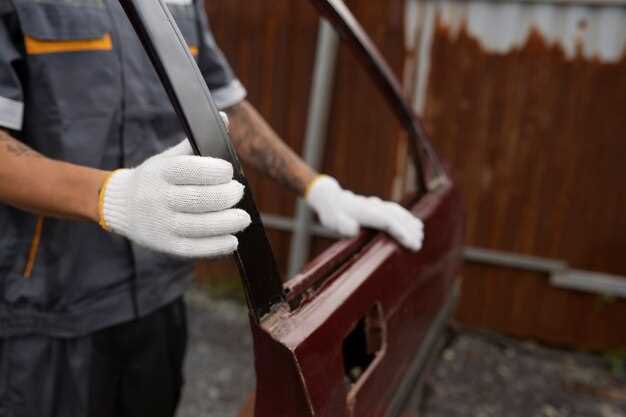
Rust can be a car owner’s worst enemy, leading to extensive damage and costly repairs. To maintain the integrity and longevity of your vehicle, understanding how to prevent rust should be a top priority. This article explores effective strategies that can safeguard your car against rust and corrosion.
One of the primary causes of rust formation is exposure to moisture and environmental elements. Regular washing and waxing of your vehicle not only enhance its appearance but also create a protective barrier against rust. By removing dirt, salt, and debris, you can mitigate the risk of corrosion, especially in regions that experience harsh winters or heavy rainfall.
Moreover, investing in rust-proofing treatments can significantly prolong your car’s lifespan. These treatments involve applying specialized coatings that inhibit rust development in vulnerable areas, such as wheel wells and undercarriage. Utilizing such preventative measures can save you from future headaches and restore your peace of mind on the road.
Regularly Clean and Wax Your Vehicle

To effectively prevent rust on your car, one of the simplest yet most crucial steps is to regularly clean and wax your vehicle. This practice not only enhances the appearance of your car but also extends its lifespan by forming a protective barrier against environmental factors.
Cleaning your vehicle involves removing dirt, grime, and road salt, all of which can significantly contribute to the formation of rust. It is essential to wash your car at least once a month, increasing the frequency during winter months when roads are treated with salt. Use a pH-balanced car wash solution and a soft sponge or microfiber cloth to avoid scratching the paint surface. Pay special attention to wheel wells, undercarriage, and any hidden crevices where dirt and moisture tend to accumulate.
After washing, ensure that you thoroughly dry your vehicle to prevent water spots and unwanted moisture buildup. A soft, clean microfiber towel is ideal for this purpose. Remember that excess moisture trapped in nooks and crannies can lead to corrosion.
Following a good wash, applying wax provides an added layer of protection. Wax creates a hydrophobic barrier that repels water and shields against UV rays, chemicals, and road debris. It is advisable to wax your vehicle every three to six months, depending on environmental conditions and your local climate. Choose high-quality car wax for optimal protection, and consider using a sealant for an additional layer of durability.
In summary, maintaining a routine of cleaning and waxing your vehicle is vital in the fight against rust. This practice not only preserves the car’s exterior but also enhances its overall value and performance over time.
Inspect and Repair Paint Damage Promptly
Regularly inspecting your car’s exterior for paint damage is crucial in preventing rust formation. The paint serves as the first line of defense against moisture and environmental contaminants that lead to corrosion. Check for chips, scratches, and scuffs after washing your car or during routine maintenance.
If you notice any areas where the paint has been compromised, it is important to address these issues immediately. Minor damages can often be repaired easily and at a low cost, preventing further deterioration. For small chips and scratches, touch-up paint that matches your car’s color can be a simple solution. Ensure the area is clean and dry before applying the touch-up paint for the best adhesion.
For larger areas of damage or if the rust is already beginning to form, more comprehensive repairs may be necessary. This could involve sanding down rusty spots, applying a rust inhibitor, and refinishing the affected area. It’s advisable to seek professional help if the damage extends beyond your expertise, as improper repairs may lead to more substantial problems down the line.
Overall, maintaining the integrity of your vehicle’s paint protects the metal underneath and significantly reduces the risk of rust development. Make a habit of inspecting your car regularly and take prompt action to repair any paint damage you find.
Utilize Rust-Resistant Coatings and Sealants

Applying rust-resistant coatings and sealants is one of the most effective strategies for protecting your vehicle from rust. These specialized products create a barrier that shields metal surfaces from moisture, road salt, and other corrosive elements. When used correctly, they can significantly extend the lifespan of your car’s body and undercarriage.
Types of Coatings: There are various types of rust-resistant coatings available on the market. Epoxy-based coatings are particularly popular due to their strong adhesion and durability. Polyurethane coatings offer excellent flexibility and are resistant to UV damage, making them suitable for exterior applications. Rust conversions, such as products containing phosphoric acid, can chemically transform rust into a more stable compound, preventing further degradation.
Application Process: Proper application is crucial for the effectiveness of these coatings. Start by thoroughly cleaning the surfaces to remove dirt, grease, and existing rust. Sanding down rust spots can help improve adhesion. Ensure the surface is completely dry before applying the coating. Follow the manufacturer’s instructions regarding the number of coats, drying times, and any necessary primer application.
Sealants: In addition to coatings, the use of sealants can provide extra protection. These products can fill small gaps and seams in your vehicle, preventing moisture ingress. Focus on areas prone to rust, such as wheel wells, undercarriages, and door edges. Regularly inspecting and renewing these sealants can further bolster your car’s defenses against corrosion.
Implementing rust-resistant coatings and sealants as part of your car maintenance routine not only promotes a longer vehicle life but also preserves its value over time. By investing in these protective measures, you ensure your car remains in optimal condition, ready to withstand harsh weather and road conditions.





